DJI’s Avata Is a Tiny, Nimble Drone With Massive Capabilities
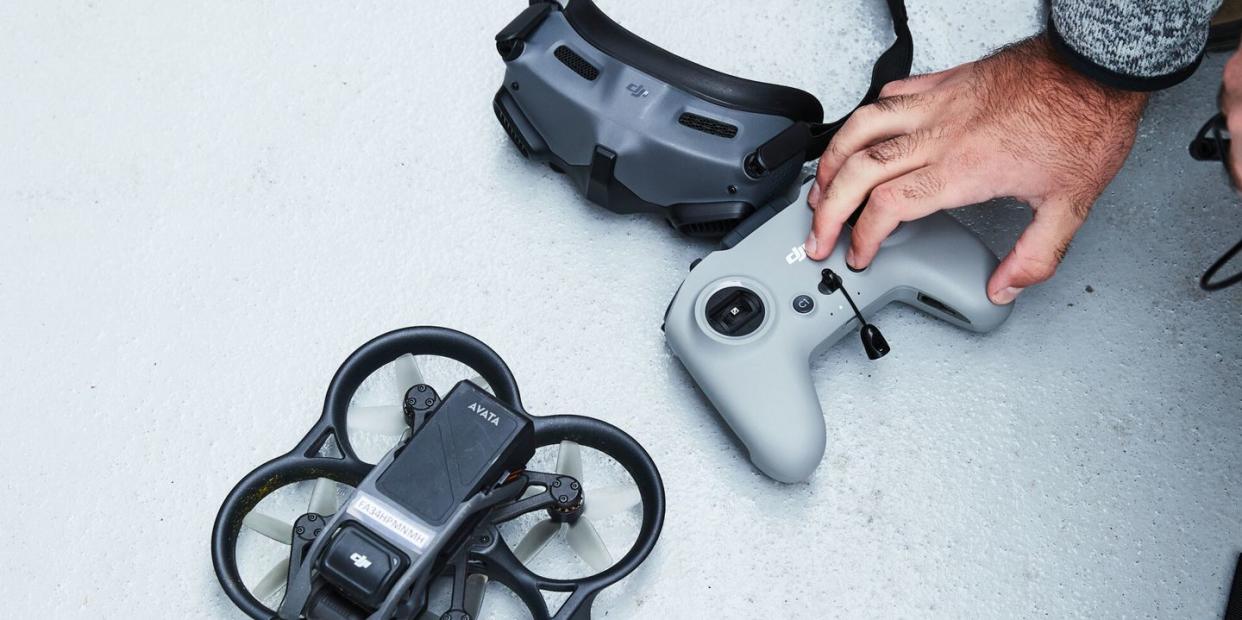
"Hearst Magazines and Yahoo may earn commission or revenue on some items through the links below."
The Takeaway: DJI’s Avata is a smaller, more nimble version of its full-sized FPV drone. The small form factor and ducted propellers allowed me to get much closer to subjects without any worries of injuring them if things went wrong. The Avata’s compact size makes it much lighter, and the ducted props stop it from slicing up any people in its flight path.
As First Person View (FPV) drones are steadily gaining popularity, I’ve been flying and building them for the last six years. The learning curve getting into such a hobby was impossibly steep, and thankfully DJI FPV products are here to bring these exciting flying machines to the public. I recently had the chance to give DJI’s small but mighty drone a proper workout at this year’s installment of Destination Outdoor, a gathering for off-road enthusiasts in Blue Ridge, Georgia.
Why Go Avata?
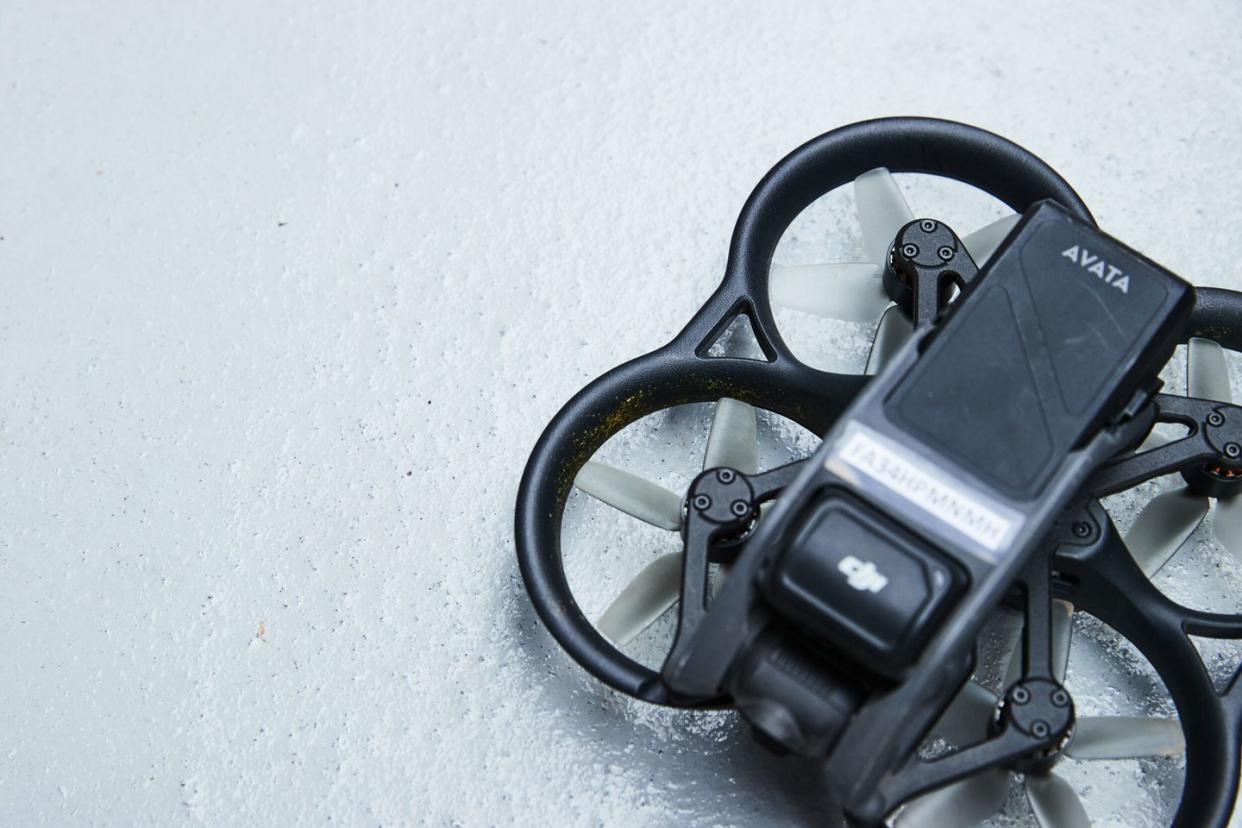
FPV drones have always been about delivering next-level flight characteristics and footage. These nimble drones broadcast the feed from an onboard camera to the pilot’s goggles. The experience puts you in the proverbial pilot’s seat of the drone.
While the flying experience is unique, flying these types of drones around people and other valuables has always been perilous. These quadcopters (comparable to the DJI FPV drone) are surprisingly heavy and feature exposed props that can do a considerable amount of damage to human skin and other surfaces. However, the DJI’s Avata’s smaller size and ducted propellers make it much safer to fly around people and less likely to do damage when crashed.
These tiny drones are sometimes referred to as “cinewhoops,” with their slower top speed and smoother flight characteristics prioritizing more relaxed flights over acrobatic movements like flips and rolls. This ability to fly through small gaps and around people makes the footage much more relatable to the viewer. Of course, bigger FPV drones can still get these types of shots, but they’re much more dangerous and difficult to fly in close proximity to other obstacles and people.
Having flown both the DJI FPV drone and the DJI Avata, the former feels like riding a horse in your bedroom while the latter compares to being a fly. Smaller drones will always be easier and safer to fly in smaller spaces.
Flight Dynamics
DJI is really pushing to sell the Avata with its motion controller instead of the conventional controller; the former feels comparable to a joystick for a flight simulator, only with no physical connection. While I can see that the goal is to make it more approachable to new pilots, all of my inputs with the motion controller felt very muddy and slow; I’m all for DJI looking to solve the steep learning curve to FPV success, but this new controller really just killed the dynamic look associated with FPV flight.
Our Senior Photographer, Trevor Raab, had largely the same opinion after having a crack with the motion controller. As the proud owner of his own DJI FPV drone, he said the Avata felt super easy to fly but dog slow with the new joystick.
I like to compare the difference between the two controllers a bit like cooking gadgets. If you’re looking to dice an onion, it’s great to have something that can do it for you. However, taking the time to learn the knife skills to break down the onion will yield a much better end product. DJI’s Avata is no different.
In fact, I’m unsure if it was a fault of the drone itself but the standard controller wouldn’t stay paired with the drone. Maybe DJI really did want me to use the motion controller? Either way, this was extremely irritating as I was stopped by the side of the trail, having to pair the controller to the drone almost every time I powered it on; frustrating only because DJI products are generally much easier to setup compared to my custom-built FPV drones.
Crash Protection
Being an FPV pilot for over six years, I’m not afraid to admit that I had my fair share of crashes with the Avata—all of them being my fault. If you’re not crashing, you’re not trying hard enough to get good footage. Regardless, the Avata handled all of its tumbles like an absolute champ. As you’ll see above/below, I piledrove the drone into the ground more than a few times with no issues to speak of.
The plastic construction combined with the light weight made it very durable for the few tumbles I took in the dirt. It might be hard to see in the footage, but most of the crashes involved clipping dead tree branches that showed up dark brown in the goggles. Even with a high-definition video feed, these branches are simply impossible to see.
Thankfully, if you do end up damaging the Avata, most of the components are cheap and replaceable. See below for a quick price breakdown of those items.
Prop Guard: $29
Propellers: $9
Upper Frame: $19
The Good
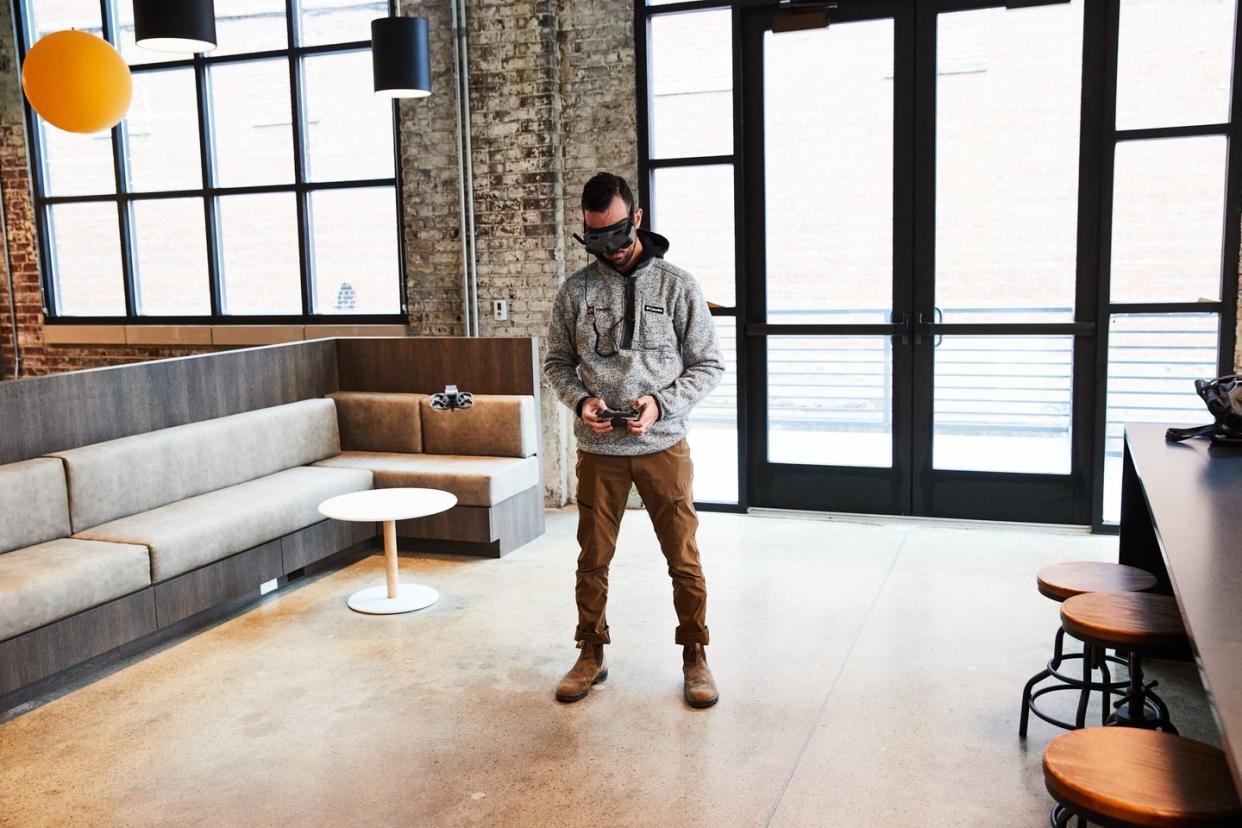
The big idea with the Avata is simplifying the road to FPV success, and DJI absolutely accomplished this with its new petite drone. It’s easy to set up, easy to fly, and components are inexpensive to replace. Once the goggles, controller, and drone are all paired together, all you really need to do is keep the batteries charged.
Another big positive with the Avata is the high-quality video feed coming into the goggles. I’m more accustomed to analog video systems, which transmit a very low-resolution video feed to the goggles that offers a very fast refresh rate but makes it very difficult to spot obstacles. DJI’s goggles display a high-definition video feed from the drone, giving me a clear preview of what’s ahead of the drone and what I need to avoid—especially useful when flying through the dense woods of Georgia.
Last but not least, the camera quality is amazing. At $629 it is an absolute bargain for a drone that can shoot video at 4K 60 fps, and 2.7K 120 fps (good for slow motion)—it can also shoot 48-megapixel photos. The Avata can also capture the same top-down style videos/ photos that you’d expect from a Mavic; throw it in normal mode, lower the camera, and you’re in business.
The Bad
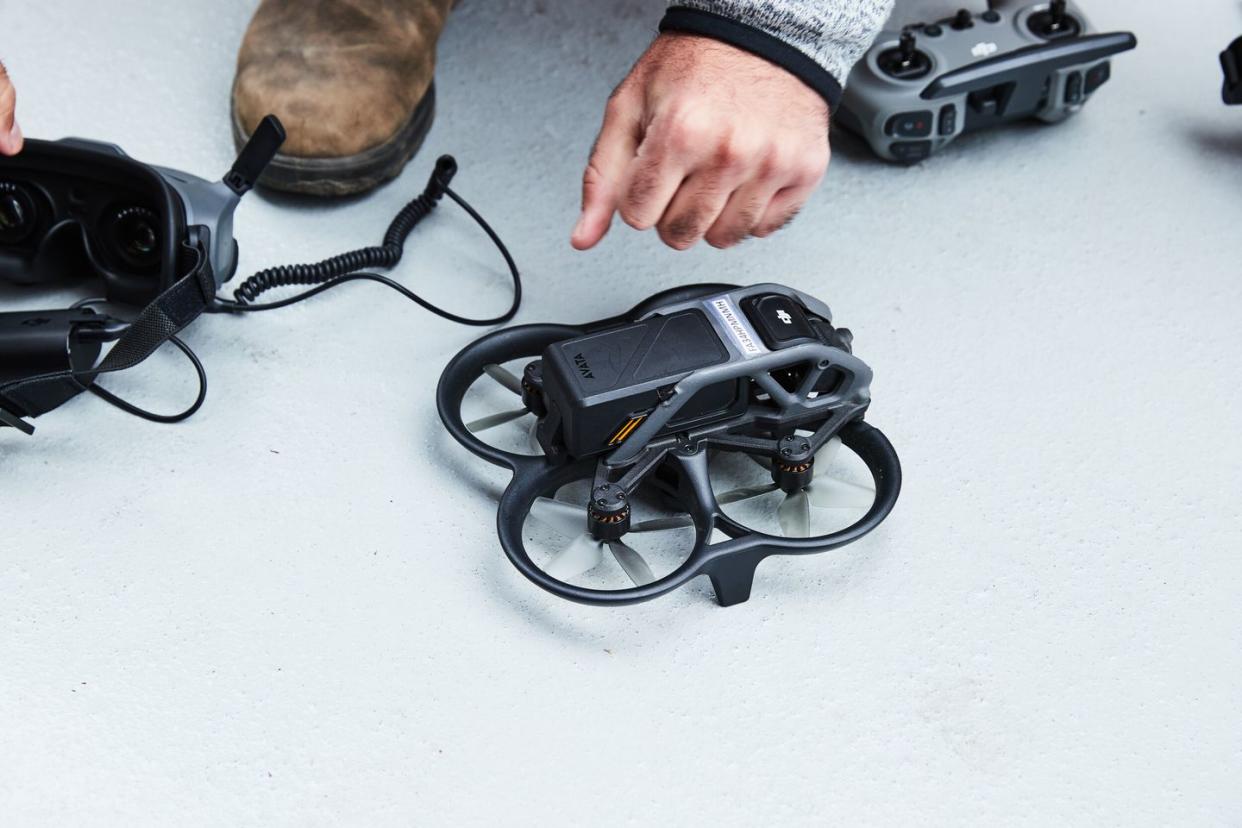
While I really wanted to love everything about the Avata, there are some issues that need to be addressed. First off, you need really fast memory cards. DJI’s list of accepted micro SD cards requires a write speed of above 30 mb/s. That’s not to mention that as standard the drone records to onboard storage in the goggles rather than the SD card in the drone.
As mentioned previously I had big issues with keeping the included controller paired with the drone. I had to reconnect nearly every time I powered it on. However, that pales into insignificance when you see that each battery sets you back $129. DJI’s Fly More combo gets you two more batteries and a parallel charger, but that will still set you back another $279. To offer some perspective, I can buy almost eight of the same size batteries for a custom-built drone of the same size.
The Verdict
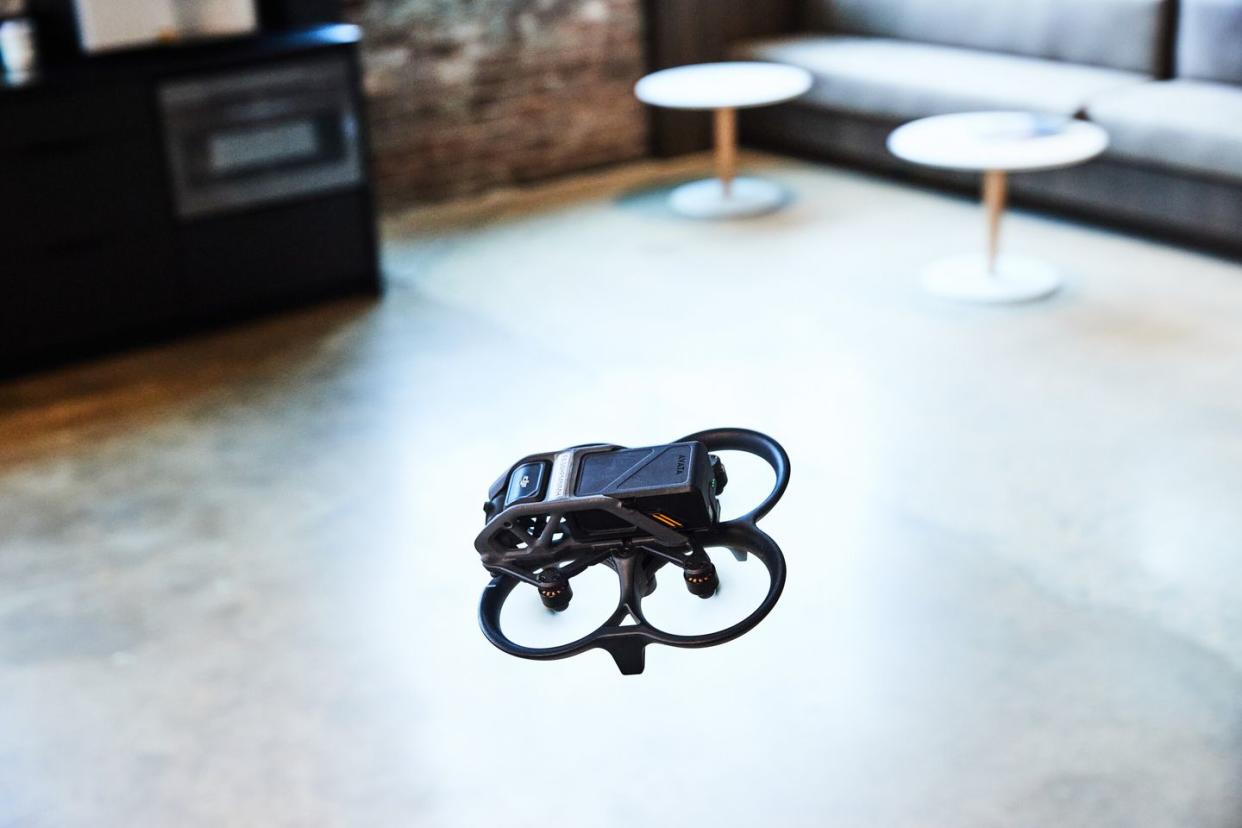
Despite being fairly pricey, DJI’s Avata is a great FPV drone for newcomers. It’s inviting and allows really anybody to capture amazing footage. Regardless of whether you just want a fun toy or need supplemental video for a professional project, it’s the drone to have.
As someone who started my drone journey from zero, crashing my brains out and nearly burning my apartment down while charging batteries, I really wish I had a drone like the Avata to start out with.
You Might Also Like
